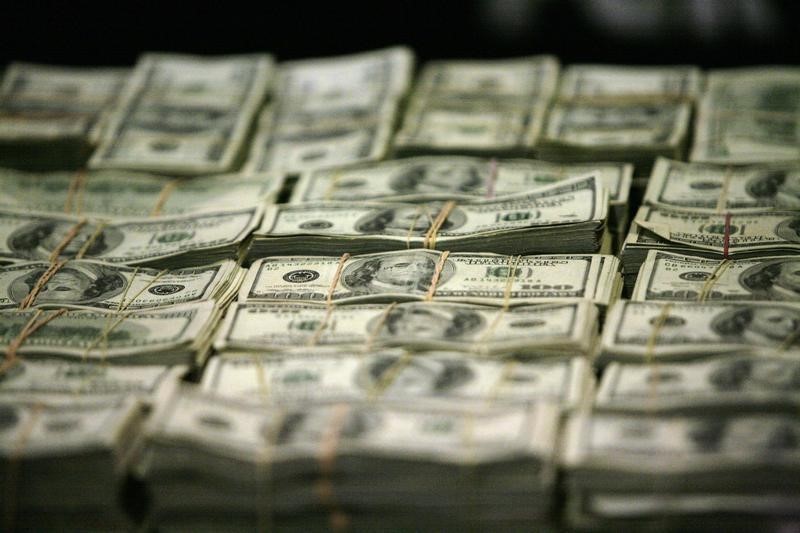Investing.com - The dollar remained higher against against the other major currencies on Wednesday, even after data showed that U.S. non-farm private employment rose less than expected in August ans as concerns over the global economic outlook persisted.
Payroll processing firm ADP said non-farm private employment rose by 190,000 last month, below expectations for an increase of 201,000. The economy created 177,000 jobs in July, whose figure was downwardly revised from a previously reported increase of 185,000.
Investors were looking ahead to Friday’s U.S. jobs report for August, for more indications on the strength of the job market and the likelihood of a near-term interest rate hike by the Federal Reserve.
The U.S. dollar index, which measures the greenback’s strength against a trade-weighted basket of six major currencies, was up 0.36% at 95.74, holding above the eight-month trough of 92.52 hit last Monday.
USD/JPY climbed 0.63% to trade at 120.11, after rising to highs of 120.46 earlier.
The dollar gained ground after the Nikkei rose in early trade, dampening demand for the Japanese currency.
But the Nikkei ended slightly lower and Chinese shares were also lower after a volatile session after Tuesday’s run of disappointing manufacturing data added to fears over the global economic outlook.
Economic reports showed that China’s factory sector contracted at the fastest rate in three years, while manufacturing activity in Europe and the U.S. was also weaker than expected.
The dollar was also higher against the euro, with EUR/USD down 0.53% at 1.1255.
The worsening outlook for equities has underpinned demand for the low yielding euro and yen in recent sessions.
Investors often use low-yielding currencies to fund positions in higher-yielding currencies and equities, known as carry trading.
The dollar was higher against the pound and the Swiss franc, with GBP/USD down 0.17% at 1.5277 and with USD/CHF advancing 0.80% to 0.9658.
Data earlier showed that the Markit construction purchasing managers' index ticked up to 57.3 in August from 57.1 in July. Economists had expected the index to improve to 57.5.
The Australian dollar was steady, with AUD/USD at 0.7015, while NZD/USD added 0.25% to 0.6347.
The Australian Bureau of Statistics reported on Wednesday that the country's gross domestic product rose 0.2% in the three months to June, compared to expectations for a 0.4% growth rate. Australia's economy expanded by 0.9% in the first quarter.
On a yearly basis, Australia's GDP increased by 2.0% in the second quarter, disappointing expectations for a 2.2% gain.
Meanwhile, USD/CAD eased 0.08% to trade at 1.3248.
